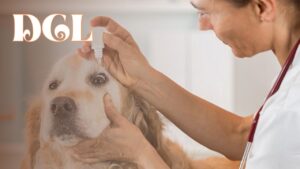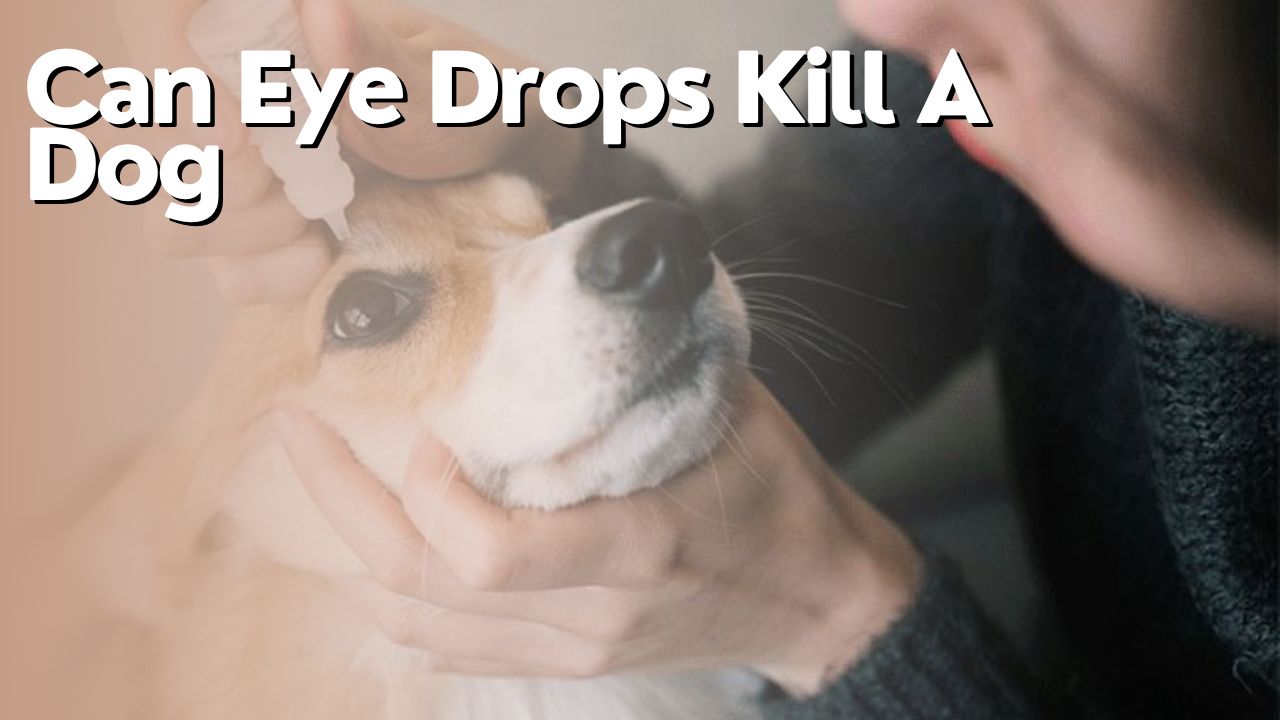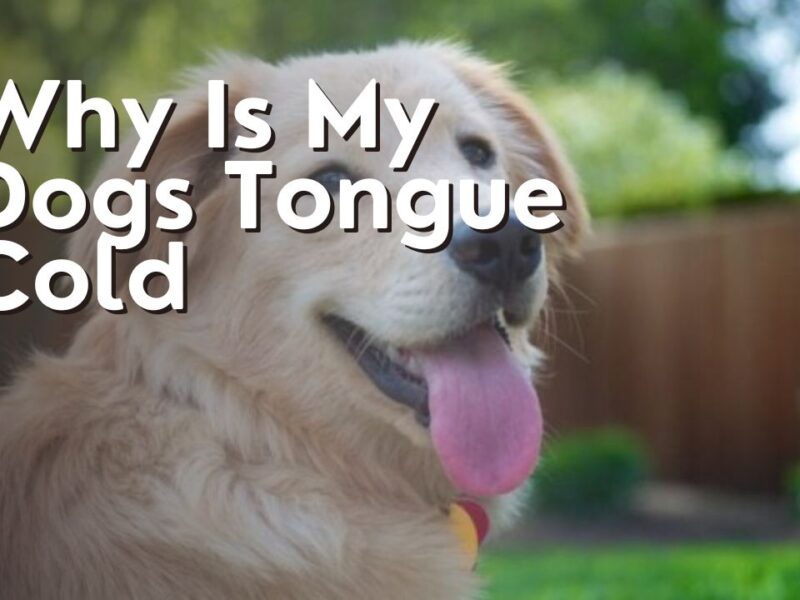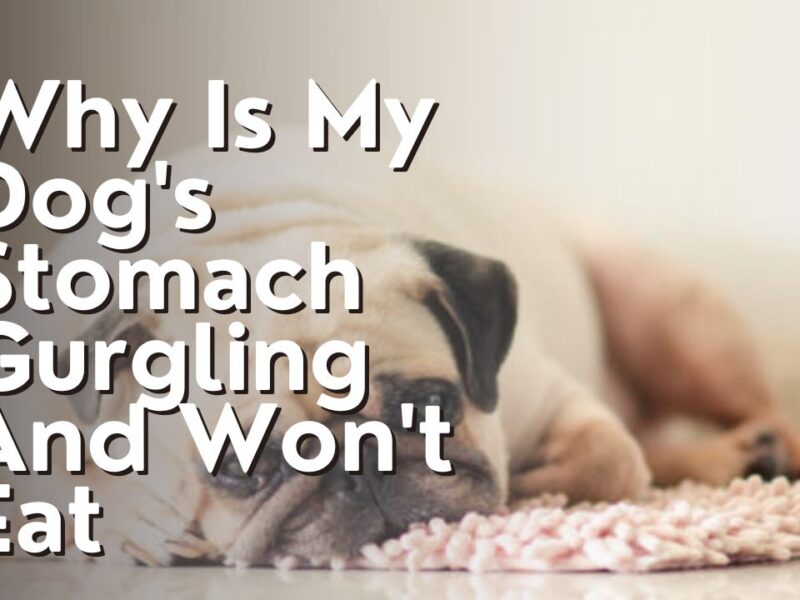Can eye drops kill a dog? This is a question that pet owners should take seriously. While eye drops are a common remedy for human eye conditions, using them on dogs can be dangerous. In this article, I will explore the differences between canine and human eye structures, the potential risks of using human eye drops on dogs, and safe alternatives for treating dog eye conditions.
It’s important to understand the dangers and seek professional advice to ensure the well-being of our furry friends.
- Understanding the Differences in Canine and Human Eye Structures
- Common Eye Conditions in Dogs
- Potential Risks of Using Human Eye Drops on Dogs
- Safe Alternatives for Treating Dog Eye Conditions
- Consulting with a Veterinarian
- Importance of Proper Eye Care for Dogs
- Symptoms of Eye Drop Toxicity in Dogs
- Immediate Actions to Take if Eye Drops are Ingested by a Dog
- Long-Term Effects of Eye Drop Toxicity in Dogs
- Spreading Awareness and Educating Others about the Dangers of Using Human Eye Drops on Dogs
- Frequently Asked Questions
- Conclusion
Understanding the Differences in Canine and Human Eye Structures
Understanding the differences in canine and human eye structures is crucial to determining whether eye drops can be harmful to dogs.
While both humans and dogs have eyes that serve the same basic function of vision, there are some key differences that make certain eye drops potentially dangerous for dogs.
One major difference is the size of the eye. Dogs typically have smaller eyes compared to humans, which means that the amount of eye drop solution that they can tolerate may be significantly less.
Additionally, the pH levels in a dog’s eyes are different from those in humans. This means that certain eye drop formulations that are safe for humans may be too acidic or alkaline for dogs, causing irritation or damage to their sensitive eyes.
Another important difference is the presence of a third eyelid in dogs. This protective membrane helps to keep foreign substances out of the eye and can also affect the absorption of eye drops. If a dog’s third eyelid is not properly retracted during administration of eye drops, it can prevent the drops from reaching the desired area and potentially lead to ineffective treatment.
In conclusion, understanding the differences in canine and human eye structures is vital in determining whether eye drops can be harmful to dogs. The size of the eye, pH levels, and the presence of a third eyelid all play a role in the potential risks associated with using eye drops on dogs. Therefore, it is important to consult with a veterinarian before administering any eye drops to ensure the safety and well-being of our furry friends.

Common Eye Conditions in Dogs
When it comes to common eye conditions in dogs, there are a few key points to keep in mind.
First, conjunctivitis, or pink eye, is a common condition that can cause redness, swelling, and discharge in the eyes.
Second, dry eye, also known as keratoconjunctivitis sicca, is a condition in which the eyes do not produce enough tears, leading to discomfort and potential damage to the cornea.
Lastly, corneal ulcers can occur as a result of trauma or infection, causing pain, redness, and sometimes discharge.
Conjunctivitis
If your dog has conjunctivitis, you can treat it with prescription eye drops. Conjunctivitis, also known as pink eye, is a common eye condition in dogs that causes redness, swelling, and discharge in the eyes. It can be caused by allergies, irritants, or infections. Prescription eye drops contain medication that helps reduce inflammation, relieve itching, and fight off any bacterial or viral infections. Using these drops as directed by your veterinarian can help alleviate your dog’s discomfort and speed up the healing process.
| Symptoms | Causes | Treatment |
|---|---|---|
| Redness | Allergies | Eye drops |
| Swelling | Irritants | Antibiotics |
| Discharge | Infections | Warm compresses |
With proper treatment and care, your furry friend will soon be back to their playful self!
Dry Eye
Using prescription eye drops can help alleviate the symptoms of dry eye in dogs. Dry eye, also known as keratoconjunctivitis sicca, occurs when the tear glands don’t produce enough tears to keep the eyes lubricated. This condition can cause discomfort, redness, and even vision problems in dogs.
The eye drops prescribed by a veterinarian for dry eye contain artificial tears or medications that stimulate tear production. These drops can provide relief by moisturizing the eyes and reducing inflammation. It’s important to follow the veterinarian’s instructions and administer the correct dosage of eye drops to avoid any potential side effects.
Regular use of eye drops can help manage dry eye and improve the overall eye health of our furry friends.
Corneal Ulcers
Corneal ulcers can be a serious condition in dogs, requiring prompt veterinary attention. These ulcers are open sores on the cornea, the transparent outer layer of the eye. They can be caused by a variety of factors, such as trauma, foreign objects, or underlying eye diseases.
If left untreated, corneal ulcers can lead to pain, discomfort, and even vision loss for our furry friends. The symptoms of corneal ulcers in dogs can include excessive tearing, squinting, redness, and discharge from the eye. It is important to seek immediate veterinary care if you suspect your dog has a corneal ulcer.
Treatment may involve medication, including antibiotic eye drops, to prevent infection and promote healing. In some cases, surgery may be necessary to repair the damaged cornea and restore vision.
Potential Risks of Using Human Eye Drops on Dogs
Be careful when using human eye drops on your dog, as there are potential risks involved. While it may be tempting to use your own eye drops to treat your dog’s eye condition, it is important to understand that not all eye drops are safe for dogs. Using the wrong type of eye drops can cause further damage to your dog’s eyes and potentially even lead to serious complications.
To illustrate the potential risks of using human eye drops on dogs, let’s take a look at a table comparing the differences between human and canine eyes:
| Human Eyes | Canine Eyes | |
|---|---|---|
| Size | Relatively larger | Smaller |
| Tear Production | Moderate | Limited |
| Sensitivity | Less sensitive | More sensitive |
| pH Levels | Neutral | Slightly acidic |
As you can see from the table, there are significant differences between human and canine eyes. These differences make it crucial to use the appropriate eye drops specifically designed for dogs. Human eye drops may contain ingredients that are harmful to dogs or may not address the specific needs of their eyes.
To ensure the best care for your dog’s eyes, it is always recommended to consult with a veterinarian before using any eye drops. They can provide you with safe and effective options that are tailored to your dog’s specific condition, promoting their health and well-being.
Safe Alternatives for Treating Dog Eye Conditions
There are safe alternatives available to effectively treat eye conditions in dogs. When it comes to our furry friends, it’s important to use products that are specifically designed for them. Here are four safe alternatives to human eye drops that can help alleviate your dog’s eye issues:
- Dog-Specific Eye Drops: These are specially formulated to be gentle on your dog’s eyes and can effectively treat various eye conditions such as dryness, redness, and irritation.
- Natural Remedies: Some natural ingredients like chamomile, calendula, and aloe vera have soothing properties that can provide relief to your dog’s eyes. You can find these ingredients in dog-specific eye washes or drops.
- Saline Solution: A simple saline solution can help flush out any irritants or debris from your dog’s eyes. You can easily make one at home by mixing sterile water and salt, following a specific ratio recommended by your veterinarian.
- Veterinary Prescribed Medications: In certain cases, your veterinarian may prescribe specific medications or ointments to treat your dog’s eye condition. These medications are safe and effective when used as directed.
Remember, it’s always best to consult with your veterinarian before starting any treatment for your dog’s eye condition. They can provide guidance on the best course of action and recommend the most suitable alternative for your furry friend’s specific needs.
Consulting with a Veterinarian
To ensure the best treatment for your furry friend, it’s important to consult with a veterinarian about their eye condition. A vet can provide a proper diagnosis and recommend the most effective treatment options. They have the expertise and experience to identify any underlying issues that may be causing your dog’s eye problem.
During the consultation, the vet will conduct a thorough examination of your dog’s eyes, looking for signs of infection, injury, or other abnormalities. They may also perform additional tests such as an eye stain or culture to determine the exact cause of the problem. Based on the findings, the vet will then discuss treatment options with you.
In order to create a rhythm and flow in the writing, here is a table that outlines some common eye conditions in dogs and their corresponding treatments:
| Eye Condition | Treatment |
|---|---|
| Conjunctivitis | Antibiotic eye drops or ointment |
| Corneal ulcer | Medications, protective eyewear, or surgery |
| Glaucoma | Eye drops, surgery, or medications |
| Cataracts | Surgical removal of the cloudy lens |
Remember, it’s crucial to consult with a veterinarian before administering any treatment to your dog’s eyes. They will guide you through the process and ensure that your furry friend receives the best care possible.
Importance of Proper Eye Care for Dogs
After consulting with a veterinarian about the potential dangers of eye drops for dogs, I realized the importance of proper eye care for our furry friends. Dogs rely heavily on their vision, just like us humans, so it’s crucial to ensure their eyes are healthy and well-maintained.
Proper eye care involves regular check-ups with a veterinarian who can assess any issues and recommend appropriate treatments. Additionally, it’s important to keep your dog’s eyes clean by gently wiping away any debris or discharge that may accumulate. This helps prevent infections and irritation.
In addition to regular check-ups and cleaning, there are a few other important aspects to consider for proper eye care:
- Diet: Providing your dog with a balanced and nutritious diet can contribute to their overall eye health.
- Environment: Ensure that your dog’s living environment is clean and free from potential eye irritants, such as dust or chemicals.
- Genetics: Some dog breeds are more prone to eye problems, so it’s essential to be aware of any breed-specific issues and take appropriate precautions.
Taking these measures can help maintain your dog’s eye health and prevent any potential issues. Remember, a healthy set of eyes means a happier and more comfortable pooch!
Symptoms of Eye Drop Toxicity in Dogs
If you notice any unusual behavior or physical changes in your dog, such as excessive drooling or difficulty breathing, it could be a sign of toxicity from using eye drops. Eye drop toxicity in dogs can occur when they accidentally ingest or are exposed to eye drops that are meant for human use. Dogs are more sensitive to the active ingredients in eye drops, such as preservatives and medications, which can lead to adverse reactions.
Some common symptoms of eye drop toxicity in dogs include redness and swelling of the eyes, excessive tearing or discharge, squinting or blinking excessively, and sensitivity to light. In more severe cases, dogs may experience difficulty breathing, vomiting, diarrhea, or seizures. If you suspect eye drop toxicity in your dog, it is important to seek veterinary care immediately.
To prevent eye drop toxicity, it is crucial to store eye drops out of reach of your dog and to never administer human eye drops to your pet without veterinary guidance. Additionally, always follow the recommended dosage and frequency when using eye drops prescribed by your veterinarian. Regularly check your dog’s eyes for any signs of irritation or infection, and consult your vet if you have any concerns.
Ensuring proper eye care for your dog can help prevent eye drop toxicity and promote their overall health and well-being.
Immediate Actions to Take if Eye Drops are Ingested by a Dog
First, make sure to remain calm if your dog ingests eye drops. It can be a scary situation, but panicking won’t help. Remember, you need to act quickly to ensure your dog’s safety.
Here are some immediate actions you should take:
- Contact your veterinarian: They are the best resource for guidance in this situation. They will ask you about the brand and type of eye drops, as well as your dog’s weight and any symptoms they may be experiencing.
- Monitor your dog: Keep a close eye on your furry friend for any signs of distress or abnormal behavior. Symptoms of eye drop toxicity can include vomiting, diarrhea, excessive drooling, and difficulty breathing.
- Do not induce vomiting: Unlike some other toxic substances, inducing vomiting is not recommended in cases of eye drop ingestion. This can cause further damage to your dog’s throat and esophagus.
- Follow your vet’s instructions: Once you have contacted your veterinarian, they will provide you with specific instructions based on your dog’s condition. They may recommend bringing your dog in for an examination or administering certain treatments at home.
Remember, time is of the essence when it comes to eye drop ingestion. By remaining calm and taking these immediate actions, you can help ensure the best possible outcome for your furry friend.
Long-Term Effects of Eye Drop Toxicity in Dogs
The long-term effects of eye drop toxicity in dogs can vary depending on the specific type of eye drops ingested and the severity of the ingestion. If a dog ingests eye drops containing medications such as corticosteroids or antibiotics, long-term effects may include gastrointestinal issues, such as vomiting and diarrhea. These medications can also affect the immune system, leading to an increased risk of infections and slower wound healing.
Ingesting eye drops that contain decongestants, such as tetrahydrozoline, can have more severe long-term effects. These decongestants can cause high blood pressure, heart problems, and even seizures in dogs. In some cases, the damage caused by the ingestion of these substances can be irreversible.
Additionally, certain eye drops contain preservatives, such as benzalkonium chloride, which can be toxic to dogs. Long-term exposure to these preservatives can cause irritation, inflammation, and damage to the delicate tissues of the eyes.
It is important to note that the long-term effects of eye drop toxicity in dogs can be minimized with prompt veterinary intervention. If you suspect your dog has ingested eye drops, it is crucial to seek immediate veterinary care to prevent any potential long-term complications.

Spreading Awareness and Educating Others about the Dangers of Using Human Eye Drops on Dogs
After learning about the long-term effects of eye drop toxicity in dogs, I have made it my mission to spread awareness and educate others about the dangers of using human eye drops on our furry friends.
It is crucial to understand that what may seem harmless to us could be potentially lethal to our beloved pets.
Using human eye drops on dogs can have severe consequences. The delicate balance of their eyes can easily be disrupted by the wrong chemicals, leading to irritation, inflammation, and even permanent damage. It is essential to remember that dogs have different eye structures and pH levels from humans, making them more susceptible to adverse reactions.
To protect our dogs, it is vital to educate ourselves and others about the proper eye care methods for our four-legged companions. By doing so, we can prevent unnecessary harm and discomfort. I encourage pet owners to consult their veterinarians for suitable eye drops specifically formulated for dogs. These specialized products are designed to address common eye conditions in dogs without posing any risks.
Together, let’s raise awareness about the dangers of using human eye drops on dogs and ensure the well-being of our furry family members. Their eyes deserve the best care possible, and by spreading knowledge, we can make a difference.
Frequently Asked Questions
Can eye drops for humans be used on dogs?
Yes, eye drops for humans can sometimes be used on dogs, but only under the guidance of a veterinarian. It’s important to use the appropriate dosage and avoid any harmful ingredients that could harm the dog’s eyes.
What are the potential risks of using human eye drops on dogs?
Using human eye drops on dogs can be risky. The drops may contain ingredients that are harmful to dogs and could cause irritation, allergic reactions, or even more serious health problems.
Are there safe alternatives for treating dog eye conditions?
Yes, there are safe alternatives for treating dog eye conditions. Your veterinarian can prescribe specialized eye drops specifically formulated for dogs, ensuring their safety and effectiveness in treating their eye issues.
What are the symptoms of eye drop toxicity in dogs?
The symptoms of eye drop toxicity in dogs include redness, swelling, excessive tearing, squinting, and discomfort. It’s important to seek veterinary attention immediately if you suspect your dog has ingested or been exposed to eye drops.
What are the long-term effects of eye drop toxicity in dogs?
The long-term effects of eye drop toxicity in dogs can include damage to the cornea, vision impairment, and chronic eye inflammation. It’s important to seek immediate veterinary care if you suspect eye drop toxicity in your dog.
Conclusion
In conclusion, it’s crucial to understand the potential risks and dangers of using human eye drops on dogs. Our furry companions may experience similar eye conditions to humans, but their eye structures are different. This makes human eye drops unsuitable and potentially harmful for them.
It’s always best to consult with a veterinarian for proper diagnosis and treatment of any eye condition in dogs. By spreading awareness and educating others about these dangers, we can ensure the well-being and safety of our beloved pets.


